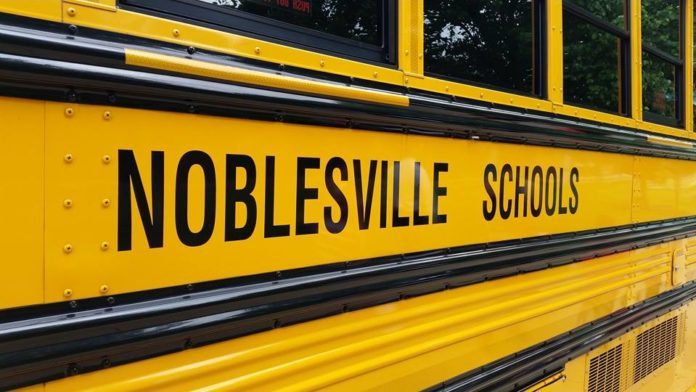A 13-year-old boy has shown no remorse for shooting his teacher and a classmate at his Indianapolis-area school, and he should be held at a state juvenile detention center until he is 18 or deemed rehabilitated, an Indiana judge ruled Wednesday.
Hamilton County Circuit Court Judge Paul Felix rejected a request from the boy’s attorneys that he be sent to a private treatment facility after he admitted shooting seventh-grade science teacher Jason Seaman and 13-year-old Ella Whistler during the May 25 attack at Noblesville West Middle School.
The boy apologized for the attack during a hearing last week. His admission in juvenile court is similar to a guilty plea in adult court.
“I did not think it was sincere,” Felix said during the teen’s punishment hearing Wednesday. “No remorse was shown last week.”
The boy, who was led into the courtroom in an orange-and-white striped jumpsuit, showed little reaction as he sat between his parents and his attorneys, answering the judge’s questions with, “Yes, your honor.” But after Felix announced his ruling, the boy appeared slightly dazed, his eyes blinking, and nodded when his mother spoke to him.
The Associated Press isn’t using the boy’s name because he is charged as a juvenile.
The judge told him that evidence shows he planned the attack on his own and had meant for it to be deadly.
“You went into the school intending to kill not just two people but many people,” Felix told the boy. “You wanted devastation, an inescapable tragedy for the ages.”
Felix ordered that the boy be sent to the Indiana Department of Correction for placement in a state juvenile detention facility for rehabilitation until he is 18, followed by probation.
The judge’s order, however, is “indeterminate,” meaning that the DOC’s juvenile division could release him before he turns 18 if the department determines that he’s been rehabilitated through treatment in state custody, said Andre Miksha, chief deputy prosecutor for Hamilton County.
Upon his release, whether at age 18 or earlier, the juvenile court will determine the length and terms of the teenager’s probation and will he remain under the court’s supervision until he turns 21, unless the court discharges him from its jurisdiction earlier, Miksha said.
Defense lawyer Christopher Eskew said he hopes his client receives the counseling he needs in the state juvenile system, but that he’s concerned about Correction’s resources. Most of the department’s treatment programs are for alcohol, drugs or sexual abuse.
“There’s very little actual emotional treatment there,” Eskew said after Wednesday’s hearing.
Eskew argued that he needs therapy at a private treatment facility, not exposure to older teenagers at a maximum security juvenile detention facility.
But Felix said older teens were unlikely to be an influence on the youth, who has been held at a juvenile detention center since the shooting. The judge noted that Legos were taken away from the boy in October after he used them to form the shape of a rifle.
“My fear is for the safety of those you will be near, not the other way around,” he said.
Prosecutors said during last week’s hearing that the boy took two handguns and more than 100 rounds of ammunition from a safe in the basement of his family’s home, and took them to school in a backpack.
Prosecutors said the boy “is obsessed with violence” and that the day before the shooting he made a video that was found on his phone and other devices in which he displayed the handguns and said: “Tomorrow’s Friday, you know what that means. I have to take other people’s lives before I take my own.”
Whistler survived, despite being shot seven times. The teacher, Seaman, was shot three times. He testified last week that the boy returned to his classroom from a bathroom break and opened fire.
Seaman, a former football player at Southern Illinois University, said he threw a miniature basketball at the boy as he fired shots, and then tackled the youth and disarmed him.
Investigators testified that the boy’s online history was filled with searches for school shootings, including “What was the largest mass shooting in America” the day before the shooting. He also searched for a “blueprint” of the Noblesville school.





